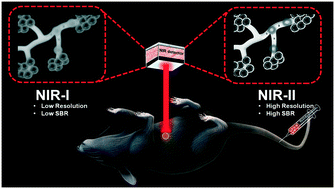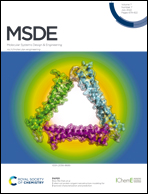Recent advances in D–A–D based Pdots with NIR-II fluorescence for deep-tissue imaging
Abstract
In recent years, semiconducting polymer-based nanoparticles (Pdots) emitting in the second near-infrared window (NIR-II, 1000–1700 nm) have become a promising type of ultrabright fluorescence probe benefitting from numerous advantages in the NIR-II region, including reduced photon scattering, minimal tissue autofluorescence, and deep-tissue penetration. Among the diverse types of NIR-II fluorescent Pdots, donor–acceptor–donor (D–A–D)-based Pdots exhibit superior properties over others, especially for their high fluorescent brightness and excellent photostability. This mini-review article focuses on the recent development of D–A–D based Pdots emitting in the NIR-II window and their diverse applications in deep-tissue in vivo imaging. Finally, an outlook is given for the future designs of bright NIR-II D–A–D Pdots.



 Please wait while we load your content...
Please wait while we load your content...